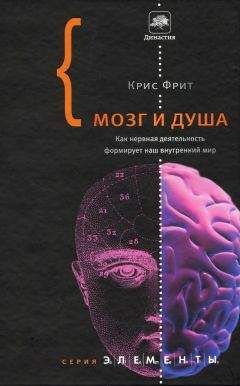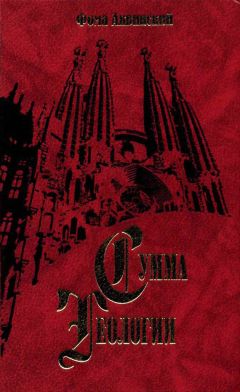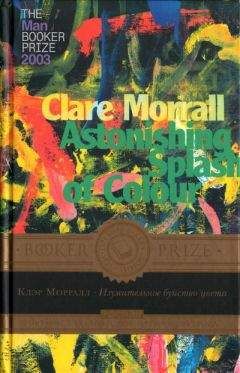Крис Фрит - Мозг и душа: как нервная деятельность формирует наш внутренний мир

Помощь проекту
Мозг и душа: как нервная деятельность формирует наш внутренний мир читать книгу онлайн
Gadamer H.-G. (1989). Truth and method (2nd rev. ed.; J. Weinsheimer & D.G. Marshall, Trans.). New York: Crossroad. (1-е английское издание вышло в 1975 г.)[180]
Предрассудки у детей
Williams, J.E., Best, D.L., & Boswell, D.A. (1975). Children's racial attitudes in the early school years. Child Development, 46(2), 494-500.
Предсказание, что я буду делать дальше
Repp, B.H., & Knoblich, G. (2004). Perceiving action identity: How pianists recognize their own performances. Psychological Science, 15(9), 604-609.
Knoblich, G., & Flach, R. (2001). Predicting the effects of actions: Interactions of perception and action. Psychological Science, 12(6), 467-472.
Заразительность: студенты начинают вести себя как пожилые люди
Bargh, J.A., Chen, M., & Burrows, L. (1996). Automaticity of social behavior: Direct effects of trait construct and stereotype-activation on action. Journal of Personal Social Psychology, 71 (2), 230-244.
Материнский язык
Kuhl, P.K., Andruski, J.E., Chistovich, I.A., Chistovich, L.A., Kozhevnikova, E.V., Ryskina, V.L., Stolyarova, E.I., Sundberg, U., & Lacerda, F. (1997). Cross-language analysis of phonetic units in language addressed to infants. Science, 277(5326), 684-686.
Burnham, D., Kitamura, C., & Vollmer-Conna, U. (2002). What's new pussy cat? On talking to babies and animals. Science, 296(5572), 1435.
Обучение путем подражания у горных горилл
Byrne, R.W., & Russon, A.E. (1998). Learning by imitation: A hierarchical approach. Behavioral & Brain Sciences, 21(5), 667-721.
Maestripieri, D., Ross, S.K., & Megna, N.L. (2002). Mother-infant interactions in western lowland gorillas (Gorilla gorilla gorilla). Journal of Comparative Psychology, 116(3), 219-227.
Младенец знает, когда мать его обучает
Bloom, P. (2000). How children learn the meanings of words. Cambridge, MA: MIT Press.
Дети, страдающие аутизмом, по-своему заучивают слова
Frith, U. (2003). Autism: Explaining the enigma (2nd ed.). Oxford: Blackwell.
Моделирование мыслей других людей
Wolpert, D.M., Doya, K., & KAWATO, M. (2003). A unifying computational framework for motor control and social interaction. Philosophical Transactions of the Royal Society of London, Series B – Biological Sciences, 358(1431), 593-602.
Роль миндалевидного тела в формировании условных рефлексов, связанных со страхом
Ledoux, J.E. (2000). Emotion circuits in the brain. Annual Review of Neuroscience, 23,155-184.
Morris, J.S., Ohman, A., & Dolan, R.J. (1998). Conscious and unconscious emotional learning in the human amygdala. Nature, 393(6684), 467-470.
Выработка условного рефлекса, связанного со страхом, путем словесных указаний
Phelps, E.A., O'Connor, K.J., Gatenby, J.C., Gore, J.C., Grillon, C., & DAVIS, M. (2001). Activation of the left amygdala to a cognitive representation of fear. Nature Neuroscience, 4(4), 437-441.
Как мозг читает мысли других людей
Frith, C.D., & Frith, U. (1999). Interacting minds – a biological basis. Science, 286(5445), 1692-1695.
Grèzes, J., Frith, C.D., & Passingham, R.E. (2004a). Inferring false beliefs from the actions of oneself and others: An fMRI study. Neuroimage, 22(2), 744-750.
Grèzes, J., Frith, C.D., & Passingham, R.E. (2004b). Brain mechanisms for inferring deceit in the actions of others. Journal of Neuroscience, 24(24), 5500-5505.
Как шизофреники трактуют голоса, которые они слышат
Chadwick, P., & Birchwood, M. (1994). The omnipotence of voices: A cognitive approach to auditory hallucinations. British Journal of Psychiatry, 264(2), 190-201.
Всепоглощающие ощущения, связанные с шизофренией
MacDonald, N. (1960). Living with schizophrenia. Canadian Medical Association Journal, 82, 218-221.
Двойной психоз
Sacks, M.H. (1988). Folie a deux. Comprehensive Psychiatry, 29(3), 270-277.
Трагедия в Джонстауне
Vankin, J., & Whalen, J. (1995). The 60 Greatest Conspiracies of All Time. Secaucus, NJ: Carol Publishing Group.
Расшифровка последней речи Джима Джонса взята из исследования «Альтернативные соображения о Джонстауне и "Храме народов"»), спонсированного отделением религиоведения университета в Сан-Диего (San Diego State University):
http://jonestown.sdsu.edu/.
Ощущения Тёрнера во время бури на море
Clark, K. (1960). Looking at pictures. New York: Holt, Reinhart & Winston.
ЭпилогРассказчик и я
Borges, J.L. (1964). Borges and I. In Labyrinths: Selected stories and other writings (pp. 246-247). New York: New Directions.[181]
Средоточие воли у нас в мозгу
Frith, C.D., Friston, K., Liddle, P.F., & Frackowiak, R.S.J. (1991). Willed action and the prefrontal cortex in man – a study with PET. Proceedings of the Royal Society of London, Series В – Biological Sciences, 244(1311), 241-246.
Действие повреждений лобных долей на волевые действия
Shallice, T. (1988). The allocation of processing resources: Higher-level control. In From neuropsychology to mental structure (pp. 328-352). Cambridge: Cambridge University Press.
Стремление угодить экспериментатору непредсказуемым поведением
Jahanshahi, M., Jenkins, I.H., Brown, R.G., Marsden, C.D., Passingham, R.E., & Brooks, D.J. (1995). Self-initiated versus externally triggered movements. I: An investigation using measurement of regional cerebral blood flow with PET and movement-related potentials in normal and Parkinson's disease subjects. Brain, 118 (Pt. 4), 913-933.
Jenkins, I.H., Jahanshahi, M., Jueptner, M., Passingham, R.E., & Brooks, D.J. (2000). Self-initiated versus externally triggered movements. II: The effect of movement predictability on regional cerebral blood flow. Brain, 123 (Pt. 6), 1216-1228.
Роль экспериментатора в волевых действиях испытуемых
Roepstorff, A., & Frith, C. (2004). What's at the top in the top-down control of action? Script-sharing and "top-top" control of action in cognitive experiments. Psychological Research, 68(2-3), 189-198.
Первый эксперимент со сканированием мозга двух взаимодействующих людей
King-Casas, B., Tomlin, D., Anen, C., Camerer, C.F., Quartz, S.R., Montague, P.R. (2005). Getting to know you: Reputation and trust in a two-person economic exchange. Science, 308(5718), 78-83.
Избавление от гомункулуса
Monsell, S., & Driver, J. (2000). Banishing the control homunculus. In S.
Monsell & J. Driver (Eds.), Control of cognitive processes: Attention and Performance XVIII (pp. 3-32). Cambridge, MA: MIT Press.
Как мог возникнуть альтруизм? Групповой отбор
Dawkins, R. (1976). The selfish gene. Oxford: Oxford University Press.[182]
Haldane, J.B.S. (1999). Altruism. In K. Connolly & M. Margaret (Eds.), Psychologically speaking: A book of quotations 10. Leicester: BPS Books, оригинал в журнале New Scientist от 8 сентября 1974 г.
Как мог возникнуть альтруизм? Альтруистическое наказание
Boyd, R., Gintis, H., Bowles, S., & Richerson, P.J. (2003).The evolution of altruistic punishment. Proceedings of the National Academy of Sciences USA, 100(6), 3531-3535.
Игры "Диктатор" и "Ультиматум"
Henrich, J., Boyd, R., Bowles, S., Camerer, C., Fehr, E., & Gintis, H. (2004). Foundations of human sociality: Economic experiments and ethnographic evidence from fifteen small-scale societies. Oxford: Oxford University Press.
Альтруистическое наказание усиливает сотрудничество
Fehr, E., & Gachter, S. (2002). Altruistic punishment in humans. Nature, 425(6868), 137-140.
Наказание «безбилетников» вызывает у нас ощущение награды
De Quervain, D.J., Fischbacher, U., Treyer, V., Schellhammer, M., Schnyder, U., Buck, A., & Fehr, E. (2004). The neural basis of altruistic punishment. Science, 305(5688), 1254-1258.
Мы не сопереживаем «безбилетникам»
Singer, T., Seymour, B., O'Doherty, J.P., Stephan, K.E., Dolan, R.J., & Frith, C.D. (2006). Empathic neural responses are modulated by the perceived fairness of others. Nature, 439(7075), 466-469.
Способность младенцев различать непреднамеренные события и преднамеренные действия
Shultz, T.R., Wells, D., & Sarda, M. (1980). Development of the ability to distinguish intended actions from mistakes, reflexes, and passive movements. British Journal of Social and Clinical Psychology, 29 (Pt. 4), 301-310.
Мы обучаемся плохому отношению к «безбилетникам»
Singer, T., Kiebel, S.J., Winston, J.S., Dolan, R.J., & Frith, C.D. (2004). Brain responses to the acquired moral status of faces. Neuron, 42(4), 653-662.
Источники иллюстраций
Рис. п.1. Коллекция образцов мозга Висконсинского университета в Мэдисоне, 69-314,
http://www.brainmuseum.org.
Фотографии и образцы получены при финансовой поддержке Национального научного фонда, а также Национального института здоровья.
Рис. п.2. Лаборатория функциональной томографии; изображения предоставлены Хлоей Хаттон.
Рис. п.3. Рис. 2 из статьи: Engelien, A., Huber, W., Silbersweig, D., Stern, E., Frith, C.D., Doring, W., Thron, A., & Frackowiak, R.S. (2000). The neural correlates of "deaf-hearing" in man: Conscious sensory awareness enabled by attentional modulation. Brain, 123 (Pt. 3), 532-545.
Рис. п.4. Рис. 11.2 из книги: Zeki, S. (1993) A vision of the brain. Oxford: Blackwell. Рис. E1-3 из книги: Popper, K.R., & Eccles, J.C. (1977). The self and its brain. London: Routledge & Kegan Paul.
Рис. п.6. Лаборатория функциональной томографии; изображения предоставлены Дэвидом Брэдбери.
Рис. п.7. Перерисовано с рис. 1 и 3 из статьи: Stephan, K.M., Fink, G.R., Passingham, R.E., Silbersweig, D., Ceballos-Baumann, A.O., Frith, C.D., Frackowiak, R.S. (1995). Functional anatomy of the mental representation of upper extremity movements in healthy subjects. Journal of Neurophysiology, 73(1), 373-386.
Рис. п.8. Перерисовано с рис. 3 из статьи: O'Craven, K.M., & Kanwisher, N. (2000). Mental imagery of faces and places activates corresponding stimulus-specific brain regions. Journal of Cognitive Neuroscience, 12(6), 1013-1023.
Рис. 1.1. Проф. Уильям Старк, отделение биологии, Университет Сент-Луиса, штат Миссури.
Рис. 1.2. Рис. 3.3 из книги: Zeki, S. (1993). A vision of the brain. Oxford, Boston: Blackwell Scientific Publications.
Рис. 1.3. Рис. 3.7 из книги: Zeki, S. (1993). A vision of the brain. Oxford, Boston: Blackwell Scientific Publications.
Рис. 1.4. Lashley, K. (1941). Patterns of cerebral integration indicated by scotomas of migraine. Archives of Neurological Psychiatry, 46, 331-339.
Рис. 1.5. Положение повреждения: табл. 7, просовывание "письма": рис. 2.2 из книги: Goodale, M.A. & Milner, A.D. (2004). Sight unseen. Oxford: Oxford University Press.
Рис. 1.6. Перерисовано по материалам статьи: ffytche, D.H., Howard, R.J., Brammer, M.J., David, A., Woodruff, P., & Williams, S. (1998). The anatomy of conscious vision: An fMRI study of visual hallucinations. Natural Neuroscience, 1(8), 738-742.
Рис. 1.7. Пациент 2 (стр. 613) из статьи: Penfield W., & Perot, P. (1963). The brain's record of auditory and visual experience. Brain, 86 (Pt. 4), 595-696.
Рис. 1.8. Рисунок Жана Кокто.
Рис. 2.2. Рон Ренсинк, отделение психологии, Университет Британской Колумбии.

























